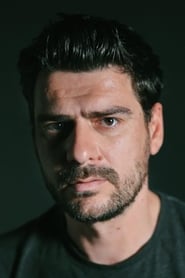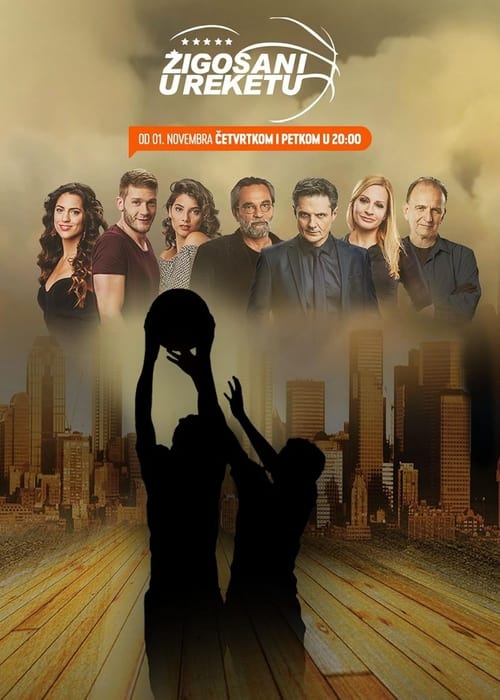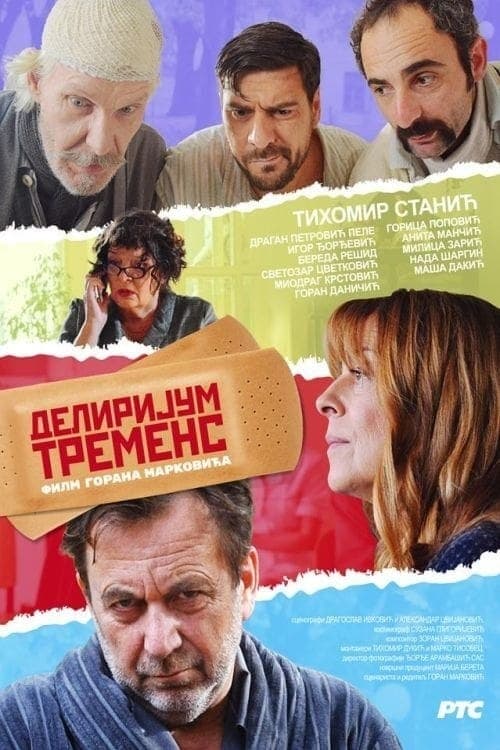
Ask Your Own Question
What is the plot?
In the second episode of "Surviving Belgrade," the story picks up with the main character, Marko, still grappling with the aftermath of the traumatic events from the previous episode. He wakes up in a dimly lit room, the remnants of a chaotic night lingering in his mind. The camera pans over his disheveled appearance, showcasing the bruises and cuts that tell the story of his recent struggles. Marko's internal conflict is palpable as he reflects on his choices and the precarious situation he finds himself in.
As he gathers his thoughts, Marko hears muffled voices outside the room. Curiosity piqued, he quietly approaches the door and listens intently. He overhears a conversation between two men discussing a plan to expand their territory in the city, hinting at a brewing conflict that could have dire consequences for him and his friends. The tension in the air is thick, and Marko's heart races as he realizes he must act quickly to protect himself and those he cares about.
Determined to escape, Marko searches the room for a way out. He spots a window that is slightly ajar and makes his way toward it. As he pushes it open, the sound of creaking hinges alerts the men outside. Panic sets in, and he hastily climbs out, landing on the ground below with a thud. The camera captures his frantic expression as he glances back at the building, knowing he has only moments before they discover his absence.
Once outside, Marko navigates through the narrow alleyways of Belgrade, the city's vibrant yet gritty atmosphere contrasting sharply with his internal turmoil. He is acutely aware of the dangers lurking around every corner, and his instincts kick in as he moves stealthily to avoid detection. The cinematography highlights the juxtaposition of the lively streets filled with people and the isolation Marko feels as he races against time.
As he makes his way to a safe house where his friends are hiding, Marko encounters an old acquaintance, Ana, who is also trying to survive in the chaotic environment. Their reunion is tense, filled with unspoken words and shared understanding of the peril they both face. Ana reveals that she has been gathering information about the rival gang's movements, and together they devise a plan to confront the threat head-on.
The scene shifts to the safe house, where Marko and Ana brief their friends, including Luka and Jovana, about the situation. The group is divided on how to proceed; some advocate for a defensive strategy, while others push for a more aggressive approach. Marko, feeling the weight of leadership, struggles to unify the group, his emotions fluctuating between fear and determination. The stakes are high, and the tension among the friends is palpable as they debate their next move.
After a heated discussion, they ultimately decide to take the fight to the rival gang. The group prepares for the confrontation, gathering makeshift weapons and strategizing their approach. The atmosphere is charged with adrenaline and anxiety as they gear up, each member grappling with their own fears and motivations. Marko, in particular, feels a sense of responsibility to protect his friends, fueling his resolve.
The climactic confrontation occurs in an abandoned warehouse, where the rival gang is rumored to be meeting. As Marko and his friends stealthily approach, the camera captures their nervous expressions and the palpable tension in the air. They split into two teams, with Marko leading one group while Ana takes the other. The plan is to create a diversion, allowing them to catch the rival gang off guard.
As the confrontation unfolds, chaos erupts. Marko's team initiates the attack, and a fierce fight breaks out. The choreography of the fight is intense, with punches thrown and bodies colliding. Marko's determination shines through as he fights valiantly, but he is also faced with moments of doubt and fear. The stakes escalate when Luka is injured, prompting Marko to make a split-second decision to protect his friend, risking his own safety in the process.
In the midst of the chaos, Ana's team successfully creates the diversion, allowing Marko and his friends to gain the upper hand. The rival gang, caught off guard, begins to retreat. The scene is frenetic, with the sounds of shouts and the clashing of bodies echoing in the warehouse. Marko's adrenaline surges as he pushes forward, determined to ensure his friends' safety.
As the fight reaches its climax, Marko confronts the leader of the rival gang. The tension between them is palpable, and a fierce exchange ensues. Marko's internal struggle is evident as he grapples with the desire for revenge and the need to protect his friends. Ultimately, he makes a pivotal choice to spare the leader's life, opting instead to send a message that they will not be intimidated. This decision marks a significant turning point for Marko, showcasing his growth and the weight of his responsibilities.
The episode concludes with Marko and his friends regrouping outside the warehouse, their faces a mix of relief and exhaustion. They have survived the confrontation, but the emotional toll is evident. As they walk away from the scene, the camera lingers on Marko's contemplative expression, hinting at the challenges that still lie ahead. The bonds between the friends have been tested, but they emerge stronger, united in their fight for survival in the unforgiving landscape of Belgrade.
What is the ending?
In the ending of "Surviving Belgrade," Season 1, Episode 2, the main characters face the consequences of their choices as tensions rise. The episode concludes with a dramatic confrontation that leaves relationships strained and futures uncertain.
As the episode unfolds, we see the characters grappling with their decisions. The atmosphere is thick with tension as they navigate their personal conflicts. The protagonist, Marko, is particularly affected by the events that transpired earlier in the episode. He feels the weight of his choices, which leads to a pivotal moment of confrontation with his friend, Luka. Their friendship hangs in the balance as they argue about loyalty and betrayal.
Meanwhile, Ana, who has been caught in the crossfire of their conflict, struggles with her own feelings of guilt and responsibility. She attempts to mediate between the two, but her efforts only seem to exacerbate the situation. The emotional stakes are high, and the characters' vulnerabilities are laid bare.
As the episode reaches its climax, Marko and Luka's argument escalates, culminating in a physical altercation that symbolizes the breakdown of their friendship. The scene is charged with raw emotion, showcasing the pain and frustration that has built up over time. Ana watches helplessly, torn between her loyalty to both men.
In the aftermath of the confrontation, the characters are left to pick up the pieces. Marko, feeling isolated and betrayed, decides to distance himself from both Luka and Ana. He walks away, leaving a sense of unresolved tension in the air. Luka, on the other hand, is left to grapple with the consequences of his actions, realizing that his choices have irrevocably changed his relationships.
Ana, feeling the weight of the situation, is left alone to reflect on the chaos that has unfolded. The episode ends on a somber note, with each character facing their own emotional turmoil and uncertainty about the future.
In summary, the ending of "Episode 2" serves as a poignant reminder of the fragility of relationships and the impact of personal choices, leaving the characters at a crossroads as they navigate their complex emotions and the consequences of their actions.
Is there a post-credit scene?
In "Episode 2" of "Surviving Belgrade," there is indeed a post-credit scene that adds an intriguing layer to the episode's narrative.
As the credits roll, the screen fades back in to a dimly lit alleyway in Belgrade. The camera pans slowly, revealing a figure shrouded in shadows, leaning against a graffiti-covered wall. The atmosphere is tense, with the distant sounds of the city echoing in the background.
The figure steps into the light, revealing it to be one of the minor characters introduced earlier in the episode, a street-smart local named Luka. His expression is serious, and there's a glint of determination in his eyes. He pulls out a crumpled piece of paper from his pocket, unfolding it carefully. The camera zooms in on the paper, which appears to be a map of the city with several locations marked in red.
Luka glances around cautiously, ensuring he's not being watched. He mutters to himself about needing to find "the others" and mentions a specific location that was hinted at during the main episode, suggesting a secret meeting or a plan that could change the dynamics of the group struggling to survive in the city.
The scene ends with Luka slipping the map back into his pocket and disappearing into the shadows, leaving viewers with a sense of anticipation and curiosity about what his next move will be and how it will impact the main characters' journey. This post-credit moment effectively sets the stage for future conflicts and alliances, deepening the intrigue of the series.
How do the relationships between characters shift in this episode?
In Episode 2, the relationships between characters become increasingly strained. Trust issues arise, particularly between Marko and his closest ally, Ana, as differing survival strategies lead to heated arguments. Meanwhile, new alliances form, with some characters banding together for protection, while others begin to isolate themselves, reflecting the growing paranoia and desperation of their situation.
What challenges do the main characters face in Episode 2?
In Episode 2 of Surviving Belgrade, the main characters confront escalating tensions within their group as they navigate the harsh realities of survival. They face food shortages, leading to conflicts over rationing and differing opinions on how to secure their next meal. The emotional strain of their situation begins to fracture relationships, revealing underlying fears and insecurities.
How does the character of Marko evolve in this episode?
Marko, who initially appears as a strong leader, begins to show signs of vulnerability in Episode 2. As the pressure mounts, he grapples with self-doubt and the weight of responsibility for the group's safety. His internal conflict is palpable, especially when he must make tough decisions that could endanger others, showcasing his struggle between leadership and personal survival.
What role does the setting of Belgrade play in the events of Episode 2?
The setting of Belgrade in Episode 2 is depicted as both a beautiful yet haunting backdrop, with its historical architecture contrasting sharply against the chaos of the characters' survival struggles. The urban landscape becomes a character in itself, as the group navigates through abandoned buildings and dark alleyways, heightening the sense of danger and isolation they feel.
What pivotal moment occurs that changes the group's dynamics in Episode 2?
A pivotal moment in Episode 2 occurs when a member of the group goes missing during a supply run. This incident triggers a wave of panic and blame, causing fractures within the group. The search for the missing person reveals deep-seated fears and loyalties, ultimately reshaping the dynamics as characters are forced to confront their own motivations and the reality of their situation.
Is this family friendly?
"Surviving Belgrade," season 1, episode 2, contains several elements that may be considered objectionable or upsetting for children or sensitive viewers.
-
Intense Emotional Conflict: The episode features scenes of heightened emotional tension among family members, which may be distressing for younger viewers.
-
Themes of Survival and Desperation: The characters face challenging situations that evoke feelings of fear and hopelessness, which could be unsettling.
-
Mature Language: There are instances of strong language that may not be suitable for children.
-
Depictions of Struggle: The characters experience physical and emotional struggles that may be difficult for sensitive viewers to watch.
-
Family Disputes: Conflicts within the family can lead to arguments and confrontations that might be uncomfortable for younger audiences.
These aspects contribute to a narrative that, while compelling, may not be appropriate for all viewers, particularly children.

















